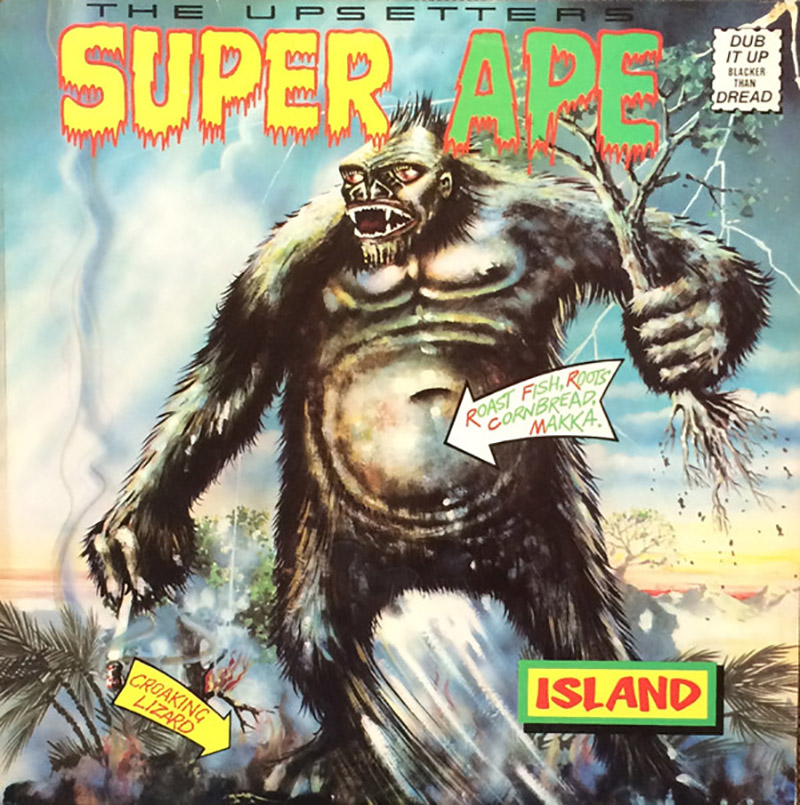The forecast is ominous: Sometime on Wednesday, the massive Hurricane Beryl, currently a category 4 storm, will likely hit Kingston, Jamaica with sustained winds of more than 145 […]
Inna Comic Book Style: Superhero Art in Dub

Larger-than-life dub heroes. For our second Art & Design: In Focus feature, ISC staff Phil Cho traces the origins behind the iconic comic book style album cover in reggae & dub.
When you think of classic reggae album covers, the images that typically come to mind include the Jamaican flag, King Selassie, Rasta Lions, the Jamaican landscape, accompanied by a straightforward photo of the artist. But there’s another classic style of artwork within reggae’s history that includes comic book superhero imagery – costumes, capes, lasers, enemy aliens and all. What do these things have to do with reggae? To find out, look at reggae’s relationship with cinema and Western popular culture in the 70’s.
Early Years & Cinema
Illustrated album covers became common in reggae during the mid 70’s. Often influenced by movies, early examples include rocksteady soundtrack classic Harder They Come (1972), which referenced Hollywood Westerns and Blaxploitation films, and Lee Scratch Perry’s Kung Fu Meets the Dragon (1975) which referenced Bruce Lee’s Enter the Dragon (1973).
These pop culture images illustrate one of the many ways in which Jamaican resourcefulness — their willingness to use just about any source material — created new ideas. Similar feats include Augustus Pablo’s use of the children’s melodica in reggae, Dancehall’s sleng-teng riddim and the dub genre as a whole, which reworked existing instrument tracks with tape manipulations and studio equipment to create an entirely new sound.
With the foundation of cinema references set, an early version of the comic book style would emerge in 1976 again with Lee Scratch Perry on his now classic Super Ape. This cover is unique in that it actually included Marvel Comics-style lettering with comic book notations and arrows. “Scratch,” with his endless creativity and playful sense of humor, became a champion for this new art style.

Enter Tony McDermott
In the 80’s, Greensleeves resident designer Tony McDermott would further popularize this playful, parody style of album cover with a slew of Scientist and Mad Professor records that referenced everything in pop culture from horror films and video games to sports.



The most common themes involved superheroes, who were the perfect foils for the dub producers McDermott was working with at the time. He portrayed these artists as larger-than-life characters able to command and direct sound at will. One of their key powers involved laser beams, a reference to the laser-like sounds employed in dub. Generated using single oscillator synthesizers, producers magnified the waves using echo and delay effects. Dub producers were also often shown commanding spaceships (mixing boards) and operating futuristic technology (sound systems and studio effects). On a more surface level, superheroes were the perfect visual for producers like Scientist and Mad Professor, whose names already sounded like they’d been pulled from the Marvel universe.

Another of McDermott’s key inspirations for this style likely came from George Clinton’s Parliament Funkadelic, a group that pioneered the space-age aesthetic in both their music and appearance. McDermott was, in fact, an avid soul & funk fan before landing the Greensleeves gig.
Below are more of our favorite comic book style reggae covers including a few later examples. Also, listen to our accompanying playlist which includes tracks from the albums featured in this article.











